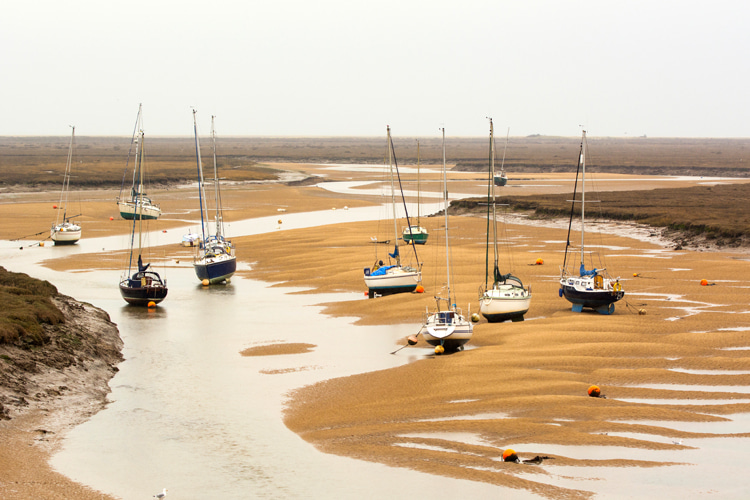
Slack tide, also known as slack water, is a brief phenomenon within the tidal cycle.
It’s the period during which the water is momentarily still – there is no movement either toward or away from the shore.
It occurs when the tidal stream pauses just before it reverses direction, transitioning from the incoming flow (flood) to the outgoing flow (ebb) or vice versa.
Imagine the ocean’s tides as the gentle rocking of a boat.
As the boat reaches the peak of its sway in one direction, there’s a momentary pause before it starts to move back the other way.
Similarly, slack tide is the moment of stillness before the tidal currents pick up speed again in the opposite direction when the boat does not move up or down.
“Amongst the First Nation people of British Columbia, this time was called ‘xtlúnexam,’ and its calm was used within stories to signify that all would be well in the end,” notes Tristan Gooley, author of “How to Read Water.”
In surf spots where waves break better in lower or higher tides, the slack tide can maximize the surfing time in ideal conditions.
When and Where Does Slack Tide Occur?
One might assume that slack tide occurs exactly at high tide (when the water is at its highest) or low tide (when the water is at its lowest).
However, this isn’t always the case. In many places, slack water happens slightly after these peak points.
For instance, in locations like San Francisco Bay, the natural event can occur 30 minutes to an hour after the high or low tide.
The delay varies depending on the geographical location, the shape of the coastline, and other environmental factors.
Furthermore, slack tide is specific to a particular spot.
Water movement just a few hundred meters away might still occur while a nearby area experiences slack.
Generally, areas closer to the open ocean experience slack tide sooner than those farther inland.

Why Is It Important?
Understanding slack tide is crucial for anyone involved in maritime activities, from sailors to scuba divers. Here are a few examples:
- Scuba Divers and Surfers: Slack tide is the safest time to dive because the water is calm, minimizing the risk of being swept away by strong currents. Diving during this period also usually offers better underwater visibility, especially after a high tide, when the incoming water is clearer. On the other hand, visibility might be reduced after a low tide because the outgoing water can stir up silt and other particles;
- Mariners: Navigating a vessel during slack water is often easier and safer, especially in narrow or treacherous channels where strong currents can push a boat off course. Additionally, timing a journey to take advantage of the favorable flow of water after slack tide can improve the vessel’s speed and fuel efficiency;
Tidal Cycle Speed
It is important to stress that tidal streams do not flow at an even speed – they don’t flow one way at a certain speed and then flip and flow in the opposite direction at the same speed.
They are almost constantly accelerating and then decelerating.
“From a standstill, at both high and low tide, the flow accelerates steadily until the period halfway between high and low tide when it will be moving its fastest, at the peak flow rate, but as soon as it reaches this speed it begins to decelerate again, all the way back to another slack water,” adds Gooley.
“Put simply, the closer you get to high or low tide, the slower the water flow will be, and during the two hours in the middle, the water flows at its fastest.”
“The flow of water during spring tides is usually close to double that during neap tides.”
The Rule of Twelfths tide table shows the speed of the hourly water level increments and diminishments.

Misinterpretation and Other Unique Tidal Events
Last but not least, note that slack tide differs from the concept of “stand of the tide,” which refers to the moment when the water level is neither rising nor falling.
Additionally, some places experience unique tidal phenomena.
For example, in Gulf St Vincent, South Australia, a “dodge tide” occurs.
It’s the rare event where the water remains almost completely still for an extended period – sometimes up to two or three days.
It happens twice a month during neap tides, and it’s particularly pronounced near the equinoxes.
Words by Luís MP | Founder of SurferToday.com


